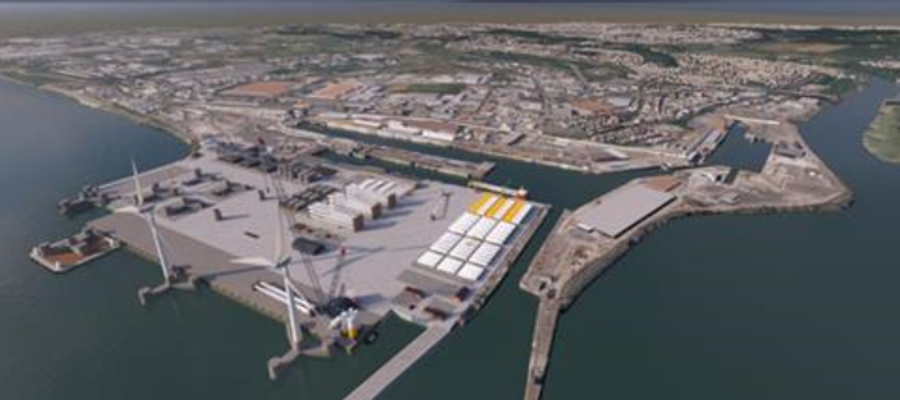🕒 Article read time: 3 minutes
Jersey port rejuvenation gets green light

Freight and passenger operations at St Helier Harbour are set for a major sustainability boost as the waterfront area receives approval for the first phase of regeneration.
Nine miles long and five miles wide, the Channel Island of Jersey sees many freight carriers and ferries and come and go from its capital St Helier.
After two years of planning including a public consultation and funding bid, the Island’s Elizabeth Harbour Regeneration project will begin to take shape in late 2025, following the announcement in November 2024 by the Government of Jersey of planning consent for the first phase of works.
Jamie Dollimore, Deputy Maritime Director, Ports of Jersey, emphasises the importance to Ports of Jersey of the project’s goal of balancing the needs of people and commerce.
“The redevelopment is the catalyst for the wider St Helier Harbour Master Plan and is critical to maintaining the Island’s lifeline, with 98.6% of all goods entering Jersey through St Helier Harbour,” he says.
“The regeneration will safeguard the long-term viability of the harbour, serving both passengers and freight. It will improve customer experience and realise the area’s potential as a leisure, cultural and tourism destination.”
The approval heralds the start of a long-term project, under the leadership of Ports of Jersey, to upgrade the lifeline port’s ageing infrastructure and bring improved facilities for both passenger and freight traffic.
With the key sustainability objective of supporting the Ports of Jersey’s net zero goal for harbour operations by 2030, the project is focused on four of the United Nations Sustainable Development Goals (SDGs): SDG 7 (affordable and clean energy), SDG 8 (decent work and economic growth), SDG 13 (climate action) and SDG 17 (partnerships for the goals).
“The design demonstrates reduced embodied carbon against a 2019 baseline," says Dollimore. "It does this by including and enabling the use of renewable energy to supplement the main energy supply for the harbour, including the new passenger terminal building.”
Energy focus
The amount of energy used in the construction process will be reduced in several ways, such as the use of modular, standardised components to enable future expansion.
When in use, the buildings will benefit from passive design, including the use of low and zero-carbon technologies. Some of the design elements will also play a role in maintaining a comfortable internal environment without much energy expenditure.
These include vertical fins that will project from the façade to shade the building’s interior and solar-controlled, low-emissivity glazing, as well as mechanical façade openings that provide ventilation to reduce operational carbon.
Green roofs with integrated photovoltaic panels will link to a site energy network, ready for future connection to seawater-source heat pumps. Futureproofing for low-carbon alternative fuels has been incorporated into the design through space allocation and the inclusion on initial infrastructure into the Master Plan.
“The reuse of materials and use of recycled materials has been incorporated to reduce embodied carbon within the design,” says Mr Dollimore.
“The design responds to the challenges of climate change to realise a climate resilient and adaptable harbour, by ensuring sustainable and ethical procurement practices for materials and also by addressing Jersey’s skills gap through apprenticeships and other initiatives throughout the redevelopment.”
Throughout the project, the focus is on minimising energy consumption, harnessing on-site renewable energy resources and integrating innovative, low-carbon and energy-efficient technologies, while providing a positive passenger experience, increased footfall and improved passenger flow.
More from The Green Miles: Reap the wild wind - The UK’s Bristol Port Company (BPC) has confirmed plans to develop a Bristol Wind Terminal at its Avonmouth Docks.

Published On: 03/02/2025 12:00:00
